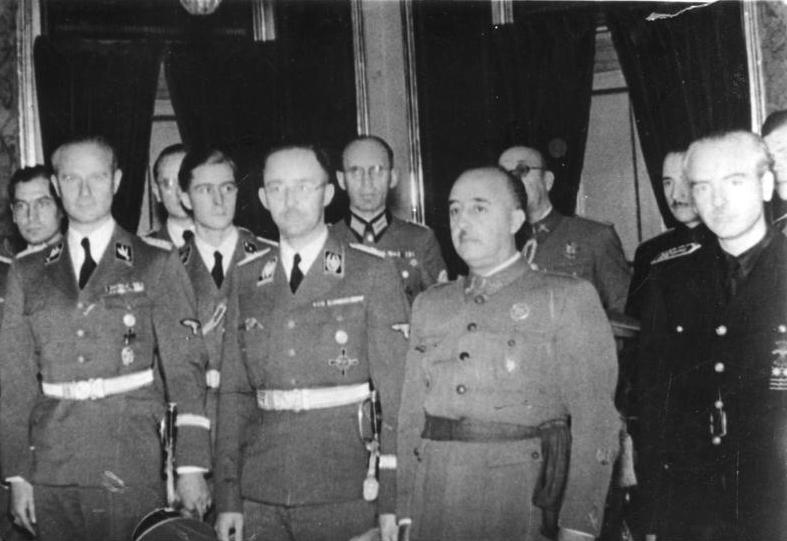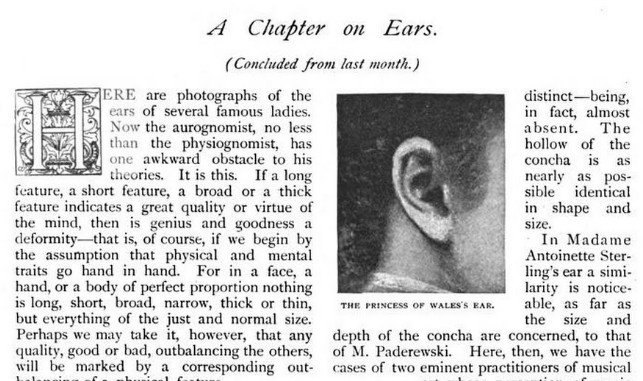A problem from the 1996 Georg Mohr mathematics competition in Denmark:
n is a positive integer. The next-to-last digit in the decimal expression of n2 is 7. What’s the last digit?
A problem from the 1996 Georg Mohr mathematics competition in Denmark:
n is a positive integer. The next-to-last digit in the decimal expression of n2 is 7. What’s the last digit?

Politicians and public figures may well care to ponder the story of the death of Franco. Surrounded on his deathbed by his faithful generals, he heard outside, beyond the heavily drawn curtains, a strange subdued noise like the sea, and asked someone to investigate. An aide did. He looked down from the palace balcony and returned with a lump in his throat and tears in his eyes and reported: ‘Caudillo, it is the people. Thousands of them. They have come to say goodbye.’ And Franco raised himself on one elbow and barked: ‘Why? Where are they going?’
— British Airways parliamentary affairs officer Norman Lornie to Jack Aspinwall, MP, for his 2004 collection Tell Me Another!

One more Sherlock Holmes oddity: “The Adventure of the Cardboard Box” appeared in the Strand in 1893. In it, Holmes tells Watson, “As a medical man, you are aware, Watson, that there is no part of the body which varies so much as the human ear. Each ear is as a rule quite distinctive and differs from all other ones. In last year’s Anthropological Journal you will find two short monographs from my pen upon the subject.”
Just a few months later, in October and November 1893, the Strand published “A Chapter on Ears,” analyzing the ears of famous Britons. Interestingly, the article carries no byline. Was it inspired by the story, or is it the work of Sherlock Holmes himself?
Christopher Morley noted that one of the featured ears was that of Oliver Wendell Holmes. “Surely, from so retiring a philosopher, then eighty-four years old, this intimate permission could not have been had without the privileged intervention of Sherlock.”
Another holiday challenge: The Royal Statistical Society’s 2017 Christmas quiz presents 13 problems that require general knowledge, logic, and lateral thinking but no particular math skills. For example:
4. CAN YOU DIG IT? [11 points]
Identify the following from the clues. What do all ten answers have in common?
You can use any tools or resources you like, including books, search engines, and computer programs. Anyone can enter, and you stand to win £150 if you’re an RSS member. The deadline for entries is January 7. The full quiz is here.
(Thanks, Dave.)

“To pray to God is to flatter oneself that with words one can alter nature.” — Voltaire
A play is put on that Mr. Baker wants to see. Tickets cost $10. Consider two situations:
What’s the likelihood in each case that Baker will buy a ticket to see the show?
People tend to say that Mr. Baker won’t buy a ticket in Case 1 but will in Case 2, because they see the loss of the money and the purchase of the ticket as unrelated. But in both cases the net outcome is the same: Baker has lost $10 and still has to spend another $10.
This example was made famous by cognitive psychologist Amos Tversky, who exploded many presumptions about how people make decisions about risks, benefits, and probabilities. “The difference between the two cases is due to a psychological bias, which is known as ‘mental budget allocation,'” explains Massimo Piattelli-Palmarini in Inevitable Illusions (1994). “As cognitive scientists and economists who study the psychological foundations of negotiation well know — as does (at least implicitly) anyone used to making deals — all of us have a resistance to ‘overspend’ a certain particular budget. In this case, the ticket budget would be overspent by Baker in the first scenario, but not in the second.” It’s a bias, but it seems so natural that many of us tend to overlook it.

In 1670, Louis XIV’s finance minister, Jean-Baptiste Colbert, ordered the planting of the Forest of Tronçais to provide masts for the French navy 200 years hence. His order established one of the principal stands of oaks in Europe, carefully interplanted with beeches and larches to encourage them to grow straight, tall, and free of knots.
By the time they matured, in the 19th century, they were no longer necessary. Historian Fernand Braudel wrote, “Colbert had thought of everything except the steamship.”

University College London mathematician Matthew Scroggs has created a mathematical Christmas card for Chalkdust magazine.
Solve 10 puzzles, convert the answers to base 3, write them in the grid, and color them accordingly to reveal a Christmassy picture.
He’s provided both a PDF and an online version that will color the squares for you.

While writing for the Charleston News and Courier, journalist Frank Gilbreth Jr. made a study of the local language. “Although, as everyone knows, Charlestonians speak perfect English,” he wrote, “residents of many other sections of the United States unfortunately do not. Ironically, these sloppy talkers from elsewhere complain sometimes, while visiting the Holy City, that they cannot understand the pure and clear accents of Charlestonians.” He offered a glossary:
ABODE: wooden plank
AIN’T: sister of one of your parents
BALKS: a container, such as a match balks
BALL: to heat a liquid until it bubbles
CANADA: politician running for public office
FAINTS: a barricade of wood or brick
FORKS: bushy-tailed animal hunted by riders in red coats
MINE EYES: salad dressing
SEND WISHES: items of food made with bread, handy for a picnic
TOY: cravat
WRETCHED: the long name for the nickname “Dick”
“A person desiring to maneuver a car to the curb might ask a pool-lease-man, ‘Cain I police pack hair?’ To which the pool-lease-man would doubtless respond, ‘No, you cain not.'”
Eventually he published a dictionary under the pseudonym Lord Ashley Cooper, and the paper sold it for 25 cents a copy. I don’t know whether it did any good. The whole thing is here.

The biologist can push it back to the original protist, and the chemist can push it back to the crystal, but none of them touch the real question of why or how the thing began at all. The astronomer goes back untold million of years and ends in gas and emptiness, and then the mathematician sweeps the whole cosmos into unreality and leaves one with mind as the only thing of which we have any immediate apprehension. Cogito ergo sum, ergo omnia esse videntur. All this bother, and we are no further than Descartes. Have you noticed that the astronomers and mathematicians are much the most cheerful people of the lot? I suppose that perpetually contemplating things on so vast a scale makes them feel either that it doesn’t matter a hoot anyway, or that anything so large and elaborate must have some sense in it somewhere.
— Dorothy L. Sayers, The Documents in the Case, 1930